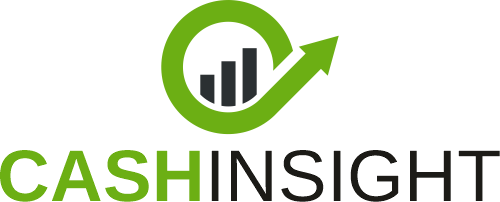
The November 2023 Consumer Price Index (CPI) remained relatively flat from the previous month, according to the latest figures from the U.S. Bureau of Labor Statistics, released December 12. The all-items index increased 3.1 percent over the past year before seasonal adjustment, a very slight decrease from October’s 12-month jump of 3.2 percent.
Despite its current plateau, inflation is now down quite significantly from its peak of 9.1 percent last summer, and before July it had declined for 12 straight months. “Inflation continues to ease from the peak seen last year,” says Mark Hamrick, Bankrate’s senior economic analyst. “As with the broad measures of inflation, the Federal Reserve isn’t ready to proclaim mission accomplished as it keeps its 2 percent target in focus, but officials must be feeling increasingly confident. Having opted to keep rates steady for two consecutive policy-setting sessions, the latest inflation data affirms the view that the Fed is likely done raising interest rates. If these trends are sustained, there should be at least some modest progress on housing affordability as well.” The central bank’s final announcement of the year is set for December 13.
Here’s a peek into how inflation affects the housing market.
Inflation and the housing market now
Despite this overall progress, the shelter category, which includes housing costs, continues to be a major contributor to the CPI’s monthly all-items increase. It rose 0.1 percent month-over-month and 6.5 percent over the last year, according to the November data. “Shelter continues to be a key irritant, or contributor, to inflation,” says Hamrick.
Shelter continues to be a key irritant, or contributor, to inflation.
— Mark Hamrick, Bankrate Senior Economic Analyst
“Given constrained inventories of homes for sale, the housing market will likely see a firm foundation under prices of existing homes for sale,” Hamrick says. “For builders, a sweet spot exists for those providing new homes for sale that include better value and lower price points.”
Nationally, CoreLogic reports that home prices rose 4.7 percent year-over-year in October and 0.2 percent compared with the previous month; it forecasts that price growth will continue at a steady pace well into 2024. Meanwhile, Fannie Mae’s latest Home Purchase Sentiment Index (HPSI) decreased by 0.6 points in November to 64.3, with an overwhelming 85 percent of respondents saying they believe it’s a bad time to buy a home.
That negative attitude is likely directly tied to today’s mortgage rates, which remain stubbornly elevated despite the lower inflation. The current average 30-year fixed mortgage rate is 7.23 percent, according to Bankrate’s most recent data — after being at or very close to 8 percent throughout much of October.
What it means for buyers and sellers
Among these decidedly mixed signals, should you buy a home now, or wait? What about selling your home now?
For homebuyers
Low inventory remains a problem for potential buyers across the country. According to the most recent existing home sales data from the National Association of Realtors (NAR), the country had a 3.6-month supply of housing inventory in October, still significantly below the 5 to 6 months that would be needed for a balanced market.
It’s OK to wait things out instead of buying now to beat further increases, especially if you’re a first-time homebuyer. While you’d be putting off building equity, you might find you’re in a better position to buy in the future, as the market continues to cool and your income can potentially grow.
Even when inflation does come down on a consistent basis, it doesn’t mean prices falling; it just means prices not rising as fast.
— Greg McBride, Bankrate Chief Financial Analyst
“Even when inflation does come down on a consistent basis, it doesn’t mean prices falling; it just means prices not rising as fast,” says Greg McBride, CFA, chief financial analyst for Bankrate. “For homebuyers, a more modest pace of appreciation, or even a period of stagnant home prices, can allow for incomes to grow further. Rather than stretching too much now, you may be able to buy a bit more comfortably in a couple of years if your income growth outpaces home price growth. But there are no guarantees.”
That said, life circumstances might require you to buy a home now, regardless of market trends, and that’s as good a reason as any. Just make sure you plan to stay in the home for long enough to come out ahead when you eventually sell.
For home sellers
The ongoing housing shortage may provide an opportunity for sellers to get a better price for their homes. This is good news, but keep in mind that if you then need to buy a new home, the tables will turn, and you’ll be subject to the same circumstances — and high mortgage rates — as other buyers.
And remember, location matters. The nationwide median home-sale price was $391,800 in October, according to NAR, but prices vary greatly from one area to the next. So, depending on where you live, you could find fewer takers or need to come down on price.
Homebuying tips when prices are high
If you’re set on buying soon, here are a few ways you can stretch your housing budget:
- Put your down payment savings in a high-yield account: One upside to inflation and the Fed’s many price hikes: higher interest rates on savings accounts. If you aren’t already, put the money you’re saving toward a down payment into a high-yield account. Just make sure the account allows you to access your money easily when it comes time for closing — some online savings accounts take three days to deliver your funds when you withdraw.
- Consider a mortgage lender with low or no fees: While it might be more convenient to get a mortgage at your bank, banks typically charge an origination fee, often 1 percent of the amount you borrow. Many non-bank and online lenders don’t, so if you can find a no-fee lender with attractive rates, you’ll keep more money in your pocket.
- Lock in your mortgage rate: When you find a lender and apply for a loan, ask about locking in your rate. Now’s not the time to take a chance on your monthly mortgage payment suddenly soaring in price, right before you’re set to close.



